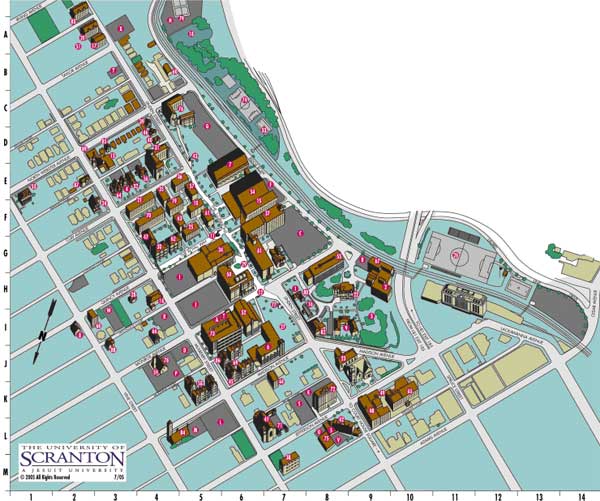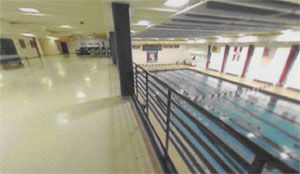









University of Scranton
Scranton, Pennsylvania
The team of Drs. Linhart and Marmion and Mr. Fellingham assisted The University of Scranton in assessing divisional and conference membership options for its Division III intercollegiate athletic program. Under the assumption that a football program would not be added, analysis of four specific options was required:
- Remain Division III and with the Middle Atlantic Conference;
- Remain Division III and move to a different conference like the Centennial Conference or the Upstate Collegiate Athletic Association;
- Move to Division I and a conference like the Metro Atlantic Athletic Conference;
- Move to Division I and a conference like the Patriot League.

The comparisons were designed and presented to enlighten those involved in decision-making and to organize their discussions productively. In summary, the only two options in which The University's decision criteria were clearly met were Options 2 and 4. Option 1 did not match The University's vision academically or athletically and did not represent a long-term solution. Option 3 was a stretch financially to The University's current resource allocations, and too many concerns were raised relative to this option's consistency with the decision criteria and The University's long term goals academically and athletically. The consultant team indicated that Option 4 also represented a considerable stretch financially, leaving Option 2 as the best option.
We also presented a series of recommendations to strengthen the intercollegiate athletic program and its contributions to campus and academic life. Among them was the recommendation to develop and implement a comprehensive physical vision and plan for the ICA program. While a campus master plan had been recently promulgated, the consultant team felt that it:
- was limited to immediate ICA program needs,
- did not recognize the insufficiencies, inefficiencies, and inadequacies of current athletic and intramural and recreation space, and
- did not integrate the long-term needs of the ICA program, the physical education/exercise science programs, and the recreation program.

In addition, the consultant team was concerned that the 20-year time frame for the planned campus physical development activities supporting the ICA program was too long to be productive in meeting real needs for athletic facilities. ICAC recommended that The University should undertake the development of a comprehensive physical vision and plan for indoor and outdoor athletic/recreational facilities supporting all constituent needs, including participants, coaches, visiting teams, spectators, score keepers, officials, media, groundskeepers, and security. The vision should reflect the aspirations of the ICA program. Does it want to be in the position of hosting NCAA tournaments? If so, it what sports? What are the implications for facilities supporting that vision?
Such a vision should also incorporate facilities that are beyond the current reach of The University and should consider development at the Spring Brook campus located 5 miles from the main campus. With a comprehensive vision, The University minimizes the risk of having to relocate utilities and/or expensive athletic fields at some future point in time. For example, an indoor tennis facility may be desired, not now but maybe 25 years from now. Where at Spring Brook should it be located? Also, at some point the pool will require major renovation to be functional. Should it be renovated, or demolished and a new facility built? What should be the decision criteria? If a new facility were to be built, where should it be located-at the main campus or at the Spring Brook campus and which site? What could be done with the existing space?

Pool at the Byron Complex, University of Scranton
Further this athletic master plan should recognize the challenges of the remote Spring Brook campus will be to utilization. Facilities supporting scheduled inter-campus transportation should be included, as well as a planned Spring Brook bus route. Minimally bus shelters should be strategically located. Accommodation of dedicated groundskeepers must also be provided. Finally, support for on-site security staff should also be provided, as well as recommendations on how best to secure these facilities when not in use.
The athletic master plan should also set the criteria for athletic facility construction and renovation. Through this plan, the level of quality for the facilities should be clearly articulated, and it should be consistent with the program vision. Importantly, quality athletic facilities can:
- Improve the University's overall image,
- Expand overall inquiry/applicant pools in the admissions process,
- Change gender/racial profile of student body,
- Enhance recruitment of quality student-athletes, and
- Improve the quality of student life in recreation opportunities, individual health and fitness, and spectator engagement.
<< Back To Projects
© 2007 | InterCollegiate Athletic Consulting